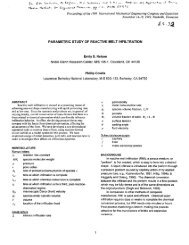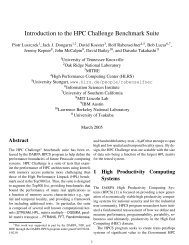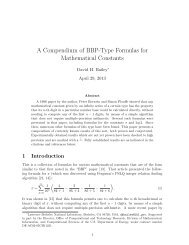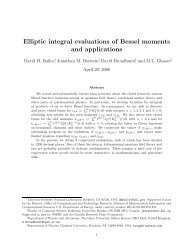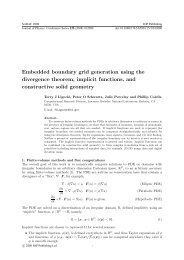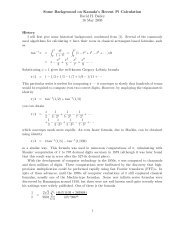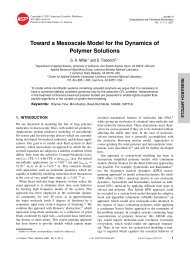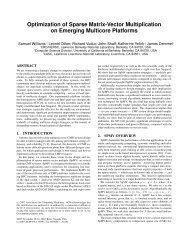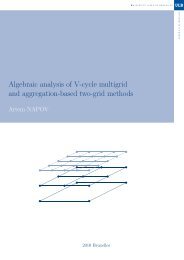High-Order, Finite-Volume Methods in Mapped Coordinates
High-Order, Finite-Volume Methods in Mapped Coordinates
High-Order, Finite-Volume Methods in Mapped Coordinates
You also want an ePaper? Increase the reach of your titles
YUMPU automatically turns print PDFs into web optimized ePapers that Google loves.
✠Dirichlet boundaryDCBAFig. 3. Locations at or near a Dirichlet boundary requir<strong>in</strong>g stencil modifications(see text).discretization leads to a stencil that is not conta<strong>in</strong>ed <strong>in</strong> a 5×5 block. However,we may use the same <strong>in</strong>terpolat<strong>in</strong>g cubic polynomial used <strong>in</strong> f<strong>in</strong>d<strong>in</strong>g (42) toobta<strong>in</strong>β (4)i+ 1 ≡ 1 ()−8Φ 12 ed 60+ 75Φ i+2 ed i − 70Φ i−e d + 3Φ i−2e d . (43)Similarly, (34) is replaced byα i+12 ed ≡ 1 20()−4Φ 1 + 15Φ i+2 ed i + 10Φ i−e d − Φ i−2e d . (44)Next, consider cell faces adjacent and normal to a Dirichlet boundary, suchas the face centered on the po<strong>in</strong>t labeled C <strong>in</strong> Figure 3. For the calculation ofthe average of the normal derivative (d = d ′ ), the calculation of the transverseLaplacian (31) us<strong>in</strong>g centered differences can be shifted one cell away from theboundary with no loss of the required second-order accuracy. A non-centered,second-order accurate formula replaces (32):( ) ∂ΦG ⊥,d0≡ 1 ()3β∂ξ d i+ 1 2h 2 1 − 4β i+2 ed 2 ed i+ 1 + β2 ed −e d′ 1 i+. (45)2 ed −2e d′For the average of the transverse derivative (d ≠ d ′ ), we replace (35) and (36)13



